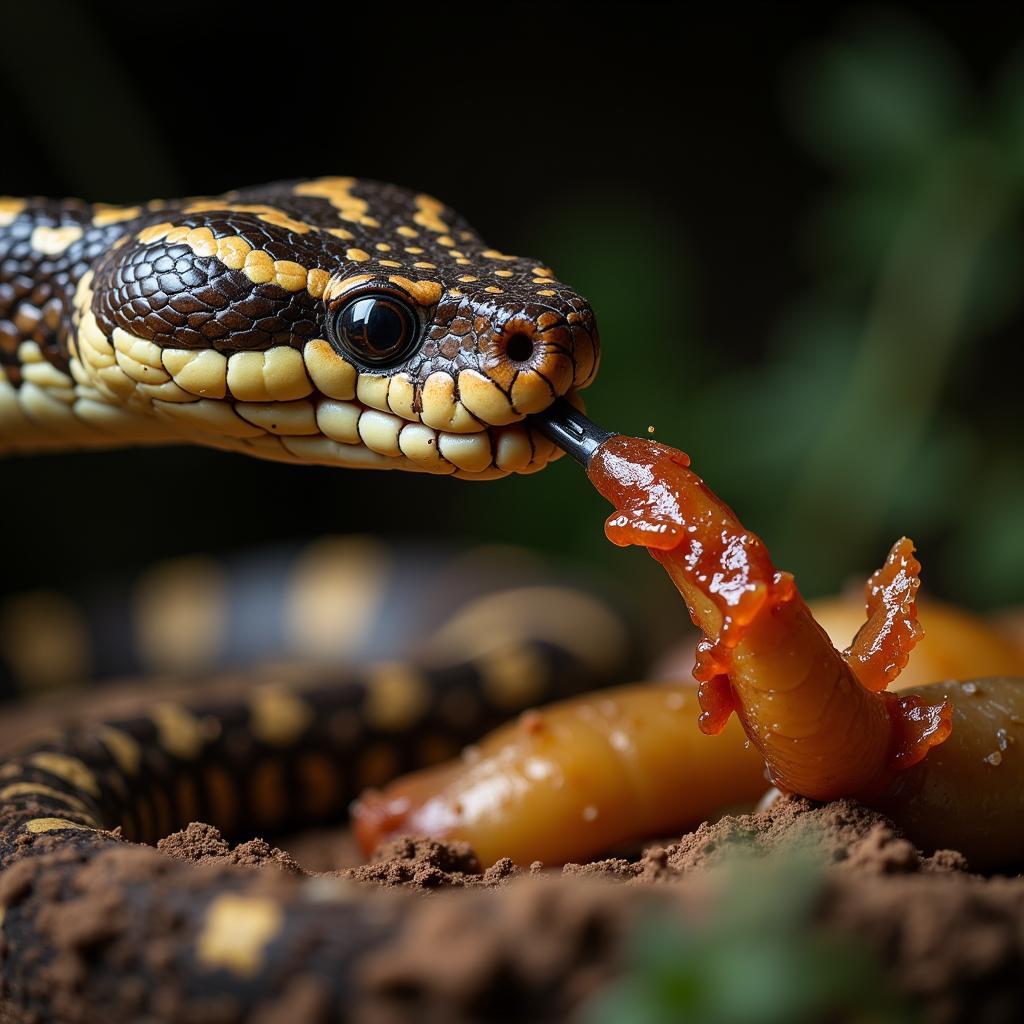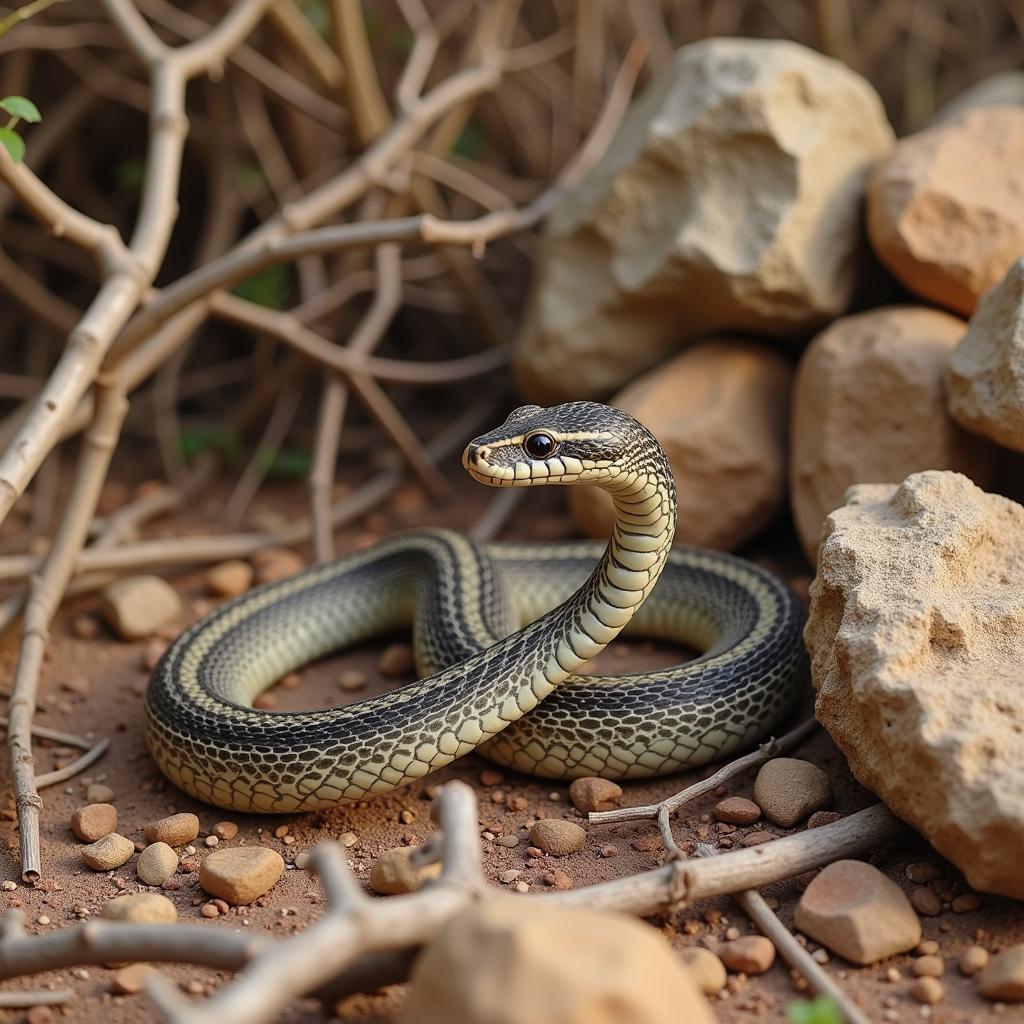African Cobra Wiki: A Deep Dive into the World of Venomous Snakes
The African Cobra Wiki encompasses a diverse group of highly venomous elapid snakes known for their iconic hoods and potent venom. These fascinating creatures play a significant role in African ecosystems and have captivated human interest for centuries. From their physical characteristics and behavior to their venom and conservation status, this comprehensive guide will explore the intricacies of the African cobra world.
Understanding the African Cobra
African cobras belong to the genus Naja and are found throughout the African continent, inhabiting diverse habitats ranging from savannas and deserts to forests and mountainous regions. They are characterized by their ability to spread a “hood” by flattening the ribs in their neck when threatened. This display serves as a warning signal to potential predators, emphasizing their venomous nature. The size and coloration of African cobras vary considerably between species, with some reaching lengths of over 10 feet. Their diet primarily consists of small mammals, amphibians, birds, and other reptiles.
The Venom of the African Cobra: Potency and Effects
The venom of African cobras is primarily neurotoxic, meaning it affects the nervous system. The specific composition of the venom varies depending on the species, but generally, it contains a cocktail of toxins that disrupt nerve impulses, leading to paralysis and respiratory failure. The venom can also cause localized tissue damage and pain. While bites from African cobras can be fatal to humans, the severity of the effects depends on factors such as the species involved, the amount of venom injected, and the individual’s health.
 African Cobra Venom Injection
African Cobra Venom Injection
Different Species: Exploring the Diversity of African Cobras
The “African cobra” is not a single species but rather a group of several distinct species. Some of the most well-known include the Egyptian cobra (Naja haje), the forest cobra (Naja melanoleuca), the spitting cobra (Naja nigricollis), and the Cape cobra (Naja nivea). Each species has its own unique characteristics, ranging in size, coloration, venom potency, and habitat preference. Understanding the differences between these species is crucial for effective conservation efforts.
The Cape Cobra: A Case Study
The Cape cobra (Naja nivea), found in southern Africa, is a highly venomous species known for its aggressive nature and potent neurotoxic venom. It typically has a yellowish to brownish coloration, but variations can occur. This species is responsible for a significant number of snakebite incidents in its range.
 Cape Cobra in Natural Habitat
Cape Cobra in Natural Habitat
Conservation Concerns: Protecting African Cobras
While some African cobra populations remain relatively stable, others face increasing threats from habitat loss, human persecution, and the illegal pet trade. Understanding these threats and implementing effective conservation strategies is essential to ensuring the long-term survival of these fascinating reptiles. Efforts include protecting their natural habitats, raising awareness about the importance of cobras in the ecosystem, and combating the illegal wildlife trade.
Conclusion: The Importance of Understanding African Cobras
The African cobra wiki offers a glimpse into the complex world of these venomous snakes. From their potent venom and diverse species to their crucial role in African ecosystems, understanding African cobras is not only fascinating but also essential for effective conservation efforts. By learning about these creatures, we can appreciate their ecological importance and work towards their protection.
FAQ
-
What is the most venomous African cobra? The Cape cobra (Naja nivea) and the forest cobra (Naja melanoleuca) are considered among the most venomous African cobras.
-
Are all African cobras spitting cobras? No, not all African cobras are spitting cobras. Spitting cobras are a specific group of cobras that can spray venom from their fangs as a defense mechanism.
-
What should I do if I encounter an African cobra? Remain calm, back away slowly, and avoid making any sudden movements. Do not attempt to handle the cobra. If bitten, seek immediate medical attention.
-
What is the lifespan of an African cobra? The lifespan of African cobras varies depending on the species but can range from 10 to 20 years in the wild.
-
How do African cobras contribute to the ecosystem? African cobras play a vital role in controlling rodent populations and maintaining a healthy balance within the ecosystem.
-
What are the main threats to African cobra populations? Habitat loss, human persecution, and the illegal pet trade are the primary threats to African cobra populations.
-
Where can I find more information about African cobra conservation efforts? Numerous organizations dedicated to wildlife conservation provide valuable information about African cobra conservation, such as the African Wildlife Foundation and the International Union for Conservation of Nature (IUCN).
Common Situations and Questions:
-
What are the symptoms of an African cobra bite? Symptoms can vary depending on the species but often include localized pain, swelling, difficulty breathing, paralysis, and eventually, respiratory failure.
-
How are African cobras different from other venomous snakes? African cobras are distinguished by their ability to spread a “hood” when threatened, a characteristic not found in all venomous snakes.
Related Articles:
- Venomous Snakes of Africa
- Snakebite First Aid and Treatment
- Wildlife Conservation in Africa
For any assistance regarding African cobras or wildlife-related queries, feel free to contact us 24/7: Phone: +255768904061, Email: kaka.mag@gmail.com, Address: Mbarali DC Mawindi, Kangaga, Tanzania. Our dedicated customer support team is always ready to help.
